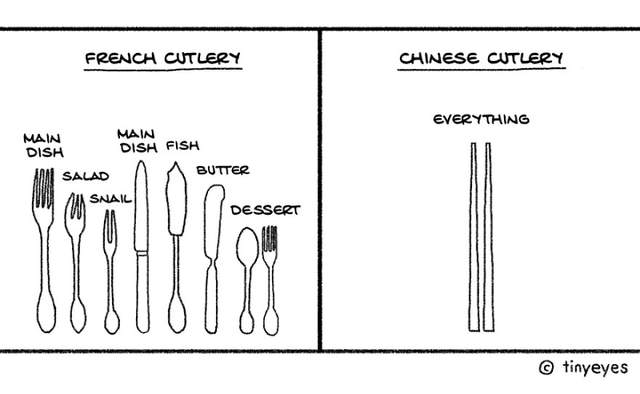Nowadays, the rapid development of media, the advancement of science and technology and the development of the Internet have contributed to the upgrading of media and the emergence of new media, including digital media. Each country has its own local cultural industries, such as media, entertainment, arts, publishing, broadcasting, film, music, advertising, design, digital media, etc. Cultural industries not only create economic value, but also play an important role in the dissemination, exchange and development of culture. It also provides employment opportunities, encourages creativity and innovation, and promotes cultural diversity and cultural exchange. Cultural industries are often regarded as an important part of the modern economy and receive wide support and attention from governments and the private sector.

Chinese and Western cultures have a lot of differences, there are also a lot of differences, not the same culture in the same point is that these are for the cultural development of people’s history, these differences between the East and West culture can not say who is better and who is worse, which is objectively constituted, and their existence will certainly give rise to the continuation of the development of human culture in the world today, no nation or country can lose or get rid of the self-traditional culture. An attitude of acceptance, not rejection, of foreign cultures is conducive to the prosperity of culture.

Differences in the development of industries in China and the West
China currently has one of the largest populations in the world, which creates a huge cultural market. The cultural industry can quickly gain large-scale audiences and potential consumers, but also needs to adapt to the needs of different regions and cultural backgrounds, which is less common in the Western market, where the cultural industry is still to some extent influenced by traditional values, such as respect for elders and traditional family values. These values have an important role to play in cultural creativity and content production, whereas in the Western industry there are vastly different values, such as individualism and freedom of expression. In addition, because of the covid-19 China has made great progress in recent years in the field of social media and digital technologies, such as the continuous improvement of platforms like WeChat, Red book and Alipay. These technologies play a key role in cultural communication, online entertainment and e-commerce, and are different from Western social media platforms because they operate within China’s specific online ecosystem, and because they are supported by the government to support rapid development.

In recent years the West has driven innovation in a variety of fields, like the music industry which has experienced the rise of digital music streaming, which has made music easier to distribute and access, and social media which has changed the way music artists interact. The film and television industry, for example, has been successful in content production and distribution, with streaming platforms such as Netflix, Amazon Prime and Disney+ changing the landscape of the film and television industry. These platforms produce and offer a wide range of original content that appeals to a diverse audience. This model has enabled the production of TV series, films and documentaries at an unprecedented level, while also transforming traditional TV advertising and distribution models.

In conclusion the cultural industries in the West differ from China in terms of cultural diversity and the use of digital technology, which together create the characteristics and direction of their respective cultural industries The use of digital technology is particularly different. China has made significant progress in social media and e-commerce and has a unique digital ecosystem, whereas Western countries are leading in digital creativity, virtual reality and gaming.
References
- .css-uodor8{border-radius:50%;}.css-1syywx2{box-sizing:border-box;margin:0;min-width:0;max-width:100%;height:auto;background-color:#ffffff;width:38px;height:38px;border-radius:50%;}小童星教育培训.css-1cd9gw4{margin-left:.3em;} (no date a) 那些你不知道的中西方文化差异, 知乎专栏. Available at: https://zhuanlan.zhihu.com/p/252403458 (Accessed: 24 October 2023).
- (No date) 社交媒体标志矢量图片-矢量标志素材-素彩网. Available at: https://www.sc115.com/vector/490168.html (Accessed: 24 October 2023).
- 小狄 (2018) 中國女孩"小眼睛"《用漫畫畫出中西文化差異》這些文化衝擊你也碰過嗎?: 宅宅新聞, 西斯新聞. Available at: https://news.gamme.com.tw/1540866 (Accessed: 24 October 2023).


This post captures how media, technology, and the internet are reshaping cultural industries. It emphasises their economic and cultural significance, promoting diversity and creativity!
I believe that the choice to compare Chinese culture with Western culture through the use of the selected images is engaging and impactful. It’s true, that streaming platforms like Netflix and Disney+ have revolutionised the production and distribution of content, offering a diverse range of original content to a global audience, but the provocation you launched seems to imply that over the last few years, China has focused on the innovation of different fields and of high relevance to the field of communication.
In conclusion, I think this blog offers a comprehensive view of how culture, media, and technology intersect and influence our societies.
However, I find that the matter regarding different landscapes in China is not extremely clear. So how do you think the distinct cultural values and technological landscapes in China (and also in the the Western world) shape the evolution of their respective cultural industries?
I like your blog very much. You explain the differences between Chinese and Western cultures in great detail. The contrast illustration of that AD is also very interesting. I also sympathize with the part about China’s economic market that you mentioned, which makes me better understand the importance of digital technology.
The differences between China and the West show the different development paths of the two countries. Because different cultures are exposed to different things, they can better experience the characteristics of the two countries.
In your article, you mentioned the differences between Chinese and Western cultures. You elaborated on the cultural differences between China and the West caused by different media dissemination methods, and your accompanying pictures also showed the differences in the use of tableware between China and the West. You also mentioned the differences between different cultures in the Eastern and Western markets, where there are values of respecting the elderly. Personally, I think your article lacks some connection with the Two Step Flow theory. You haven’t mentioned how the two-step flow theory plays a role in this. I think if you could add a connection to the two-step flow theory, the rigor and logic of the entire article would be better.
The content is simple and straightforward, showing the differences between Chinese and Western cultural industries.